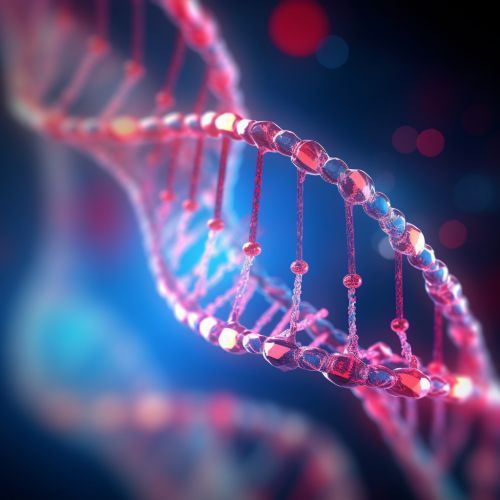Deletion mutagenesis
Introduction
Deletion mutagenesis is a molecular biology technique that involves the removal of specific sequences of genetic material. This method is used to study the function of genes and their regulatory elements, and to create genetic models for research. Genes are the fundamental units of heredity, carrying the instructions for the development, function, and reproduction of all living organisms. The removal of a gene or a part of it can provide valuable insights into its role in the organism's biology.
Principles of Deletion Mutagenesis
Deletion mutagenesis is based on the principles of Molecular Biology, particularly those related to the structure and function of Deoxyribonucleic Acid (DNA). DNA is a double-stranded molecule that carries the genetic information of an organism. It is composed of four types of nucleotides: adenine (A), thymine (T), cytosine (C), and guanine (G). These nucleotides pair up in a specific way, with A always pairing with T, and C always with G, forming the rungs of the DNA ladder.
In deletion mutagenesis, a specific sequence of these nucleotides is removed or "deleted". This can be a single nucleotide, a small group of nucleotides, or an entire gene. The deletion causes a change in the genetic information, which can affect the function of the gene and the proteins it codes for. This change can then be studied to understand the role of the gene or the protein in the organism's biology.


Techniques for Deletion Mutagenesis
There are several techniques used for deletion mutagenesis, each with its own advantages and limitations. Some of the most common ones include:
Homologous Recombination
Homologous Recombination is a natural process that occurs during meiosis, the type of cell division that produces sex cells. In this process, similar sequences of DNA align and exchange genetic material. This can result in the deletion of a specific sequence if one of the DNA molecules has a gap in the corresponding location.
In the laboratory, homologous recombination can be induced artificially. A DNA molecule with a gap in the desired location is introduced into the organism's cells. The cells' natural repair mechanisms recognize the gap and fill it in using the organism's own DNA as a template. If the introduced DNA molecule is incorporated into the organism's genome, the desired deletion is achieved.
Site-Directed Mutagenesis
Site-Directed Mutagenesis is a more precise technique that allows for the deletion of specific sequences. In this method, a synthetic DNA molecule that matches the organism's DNA except for the desired deletion is created. This molecule is then introduced into the organism's cells, where it replaces the original DNA through homologous recombination.
CRISPR-Cas9
The CRISPR-Cas9 system is a recent addition to the toolkit of deletion mutagenesis. This system, which is derived from bacteria, uses a guide RNA molecule to target a specific sequence of DNA. The Cas9 enzyme then cuts the DNA at this location, and the cell's repair mechanisms fill in the gap, often introducing errors that result in the deletion of the targeted sequence.
Applications of Deletion Mutagenesis
Deletion mutagenesis has a wide range of applications in research and medicine. Some of the most important ones include:
Gene Function Analysis
By deleting a gene and observing the resulting changes in the organism's phenotype, researchers can infer the function of the gene. This is a fundamental technique in genetics and genomics, and has been used to identify the roles of thousands of genes in various organisms.
Disease Modeling
Deletion mutagenesis can be used to create models of genetic diseases. By deleting the gene or genes associated with a disease in a laboratory organism, researchers can study the disease's mechanisms and test potential treatments.
Genetic Engineering
In genetic engineering, deletion mutagenesis is used to remove undesired genes from an organism's genome. This can be used to improve the organism's traits, such as increasing crop yields or creating disease-resistant livestock.
Limitations and Ethical Considerations
While deletion mutagenesis is a powerful tool, it also has limitations and raises ethical considerations. The process can be time-consuming and technically challenging, and not all deletions result in a noticeable change in phenotype. There are also concerns about the potential for unintended consequences, such as off-target effects in CRISPR-Cas9, and the ethical implications of altering an organism's genome.
